- There are several reasons why your external drive may not be showing up on your Windows PC, such as hardware issues, faulty drivers, etc.
- Before trying out various solutions, make sure to perform some preliminary checks, such as connecting the drive with another PC and making sure it turns on.
- If the drive turns on and can be accessed on another PC, you can try running the Windows Hardware Troubleshooter, update the device drivers, assign a drive letter, and enable Auto Mounting.
- In case the drive does not show up on any PC, it may be damaged and you may have to replace it.
Fix 1: Run the hardware troubleshooter
Windows has a built-in troubleshooter that can help diagnose and fix problems with your hardware. You can use it to try and resolve problems preventing your external drive from not showing up.
- Use the
Win + Rshortcut to launch the 'Run' dialog box. - When the box appears, type
msdt.exe -id DeviceDiagnosticinside it and press Enter.
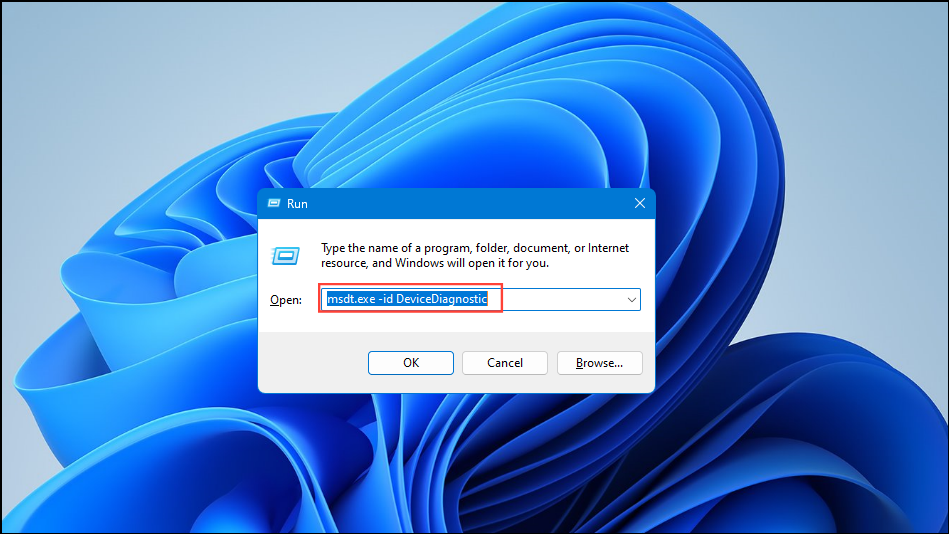
- When the hardware troubleshooter pops up, click on the 'Next' button.
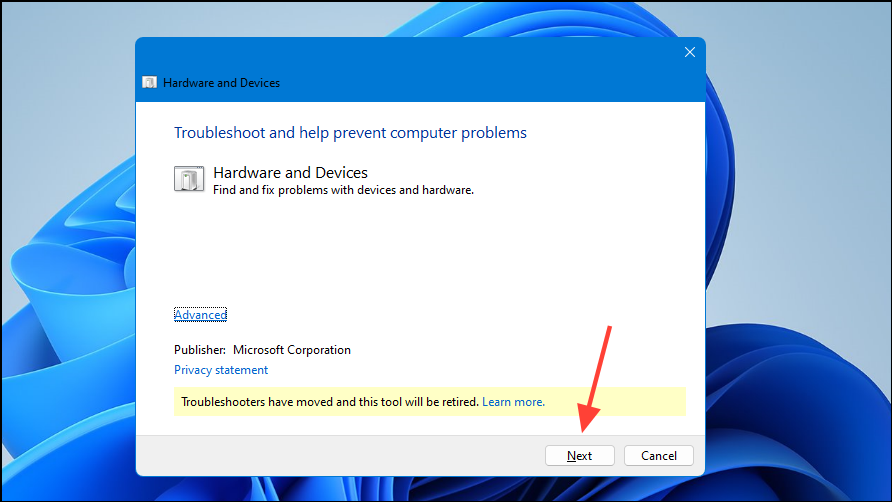
- The troubleshooter will check for problems and if it finds any, it will inform you of the steps you need to take to fix it, such as rebooting your PC. Follow the steps and then check whether your external drive is showing up.

Fix 2: Try Auto Mounting
Auto Mounting is a Windows feature that lets your computer automatically map the location of a newly connected drive and assign it a letter. You can check that it is enabled and turn it on if it isn't.
- Open the Start menu, type
cmd, and click on 'Run as administrator'.
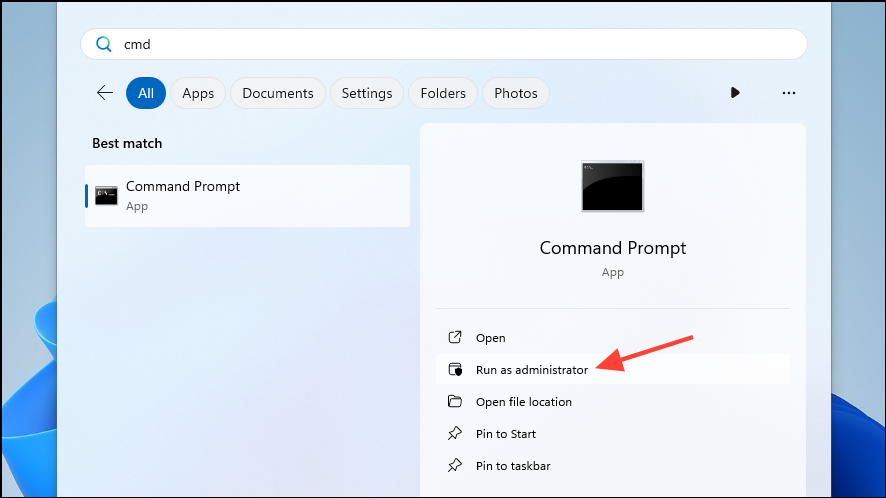
- When the command prompt window appears, type
mountvol /Eand press Enter.
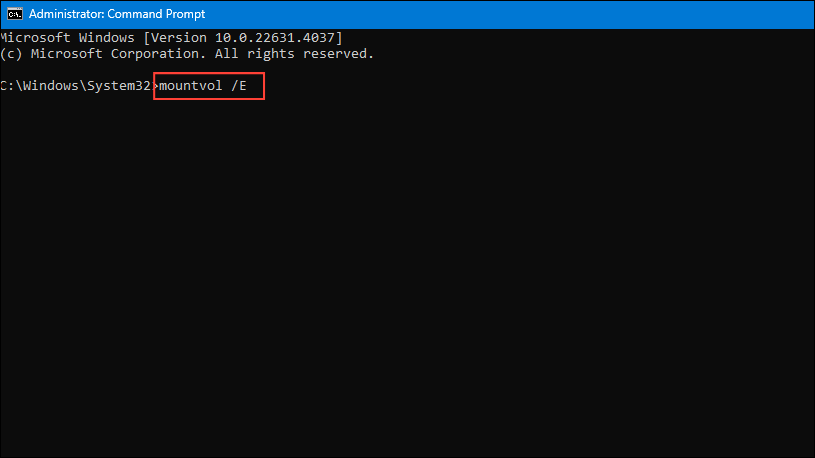
- This will turn Auto Mount on. You can now restart your PC and try connecting your external drive again. If you want, you can remove all the letters Windows assigned to various drives by typing
mountvol /Rin the command prompt window.
Fix 3: Check the Disk Management utility or BIOS
The Disk Management tool in Windows not only shows all internal and external drives connected to your PC but even lets you resize and format them. You can use it to access your external drive.
- Open the Start menu, search for 'Disk management', and click on 'Create and format hard disk partitions'.
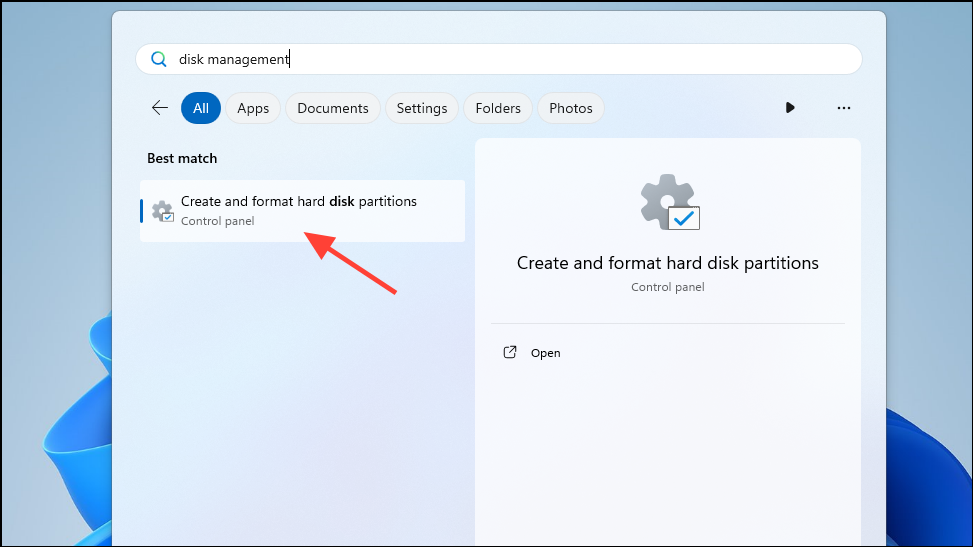
- Next, connect your external drive to your PC. It should show up in the Disk management utility.
- Check that the connected drive appears as 'Online' on the left. If it's offline, right-click on it and then on 'Online' in the context menu.

- Once the drive is online, it will open in a new Windows Explorer window. If it does not, you can check whether it shows up in your BIOS. To do that, first, reboot your PC.
- As it boots up, press the BIOS key to enter the BIOS, which can vary depending on your PC make and model but can be F2, F10, F12, or other keys.
- Once you enter the BIOS, use the arrow keys to go to the hardware tab and check whether your external drive is listed.
Fix 4: Create a new volume
If your external drive shows up in the Disk Management utility, you can create a new volume to access it.
- If the drive appears as unallocated space, right-click anywhere on the space and then click on 'New Simple Volume'.
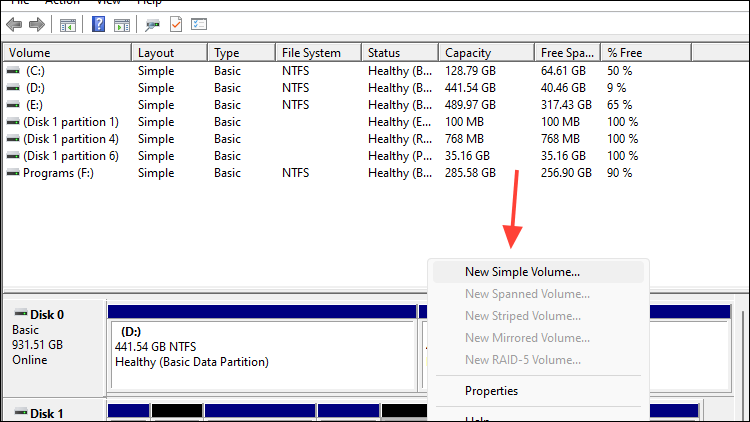
- When the New Volume wizard opens, you can select the size of the volume. Then click on the 'Next' button.
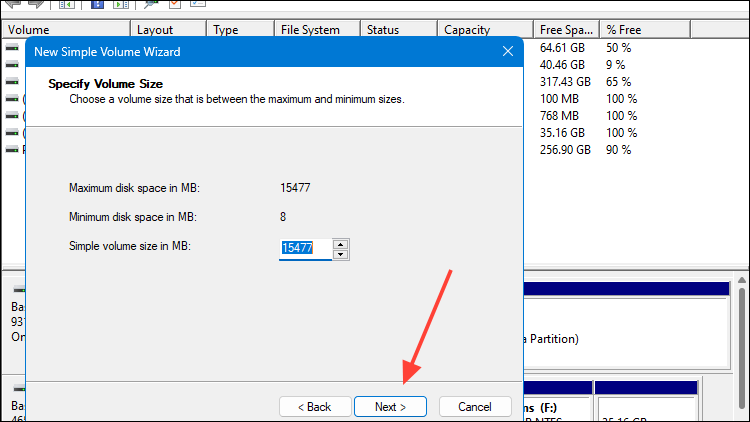
- On the next page, select the letter to be assigned to the newly created volume before clicking on 'Next' again.
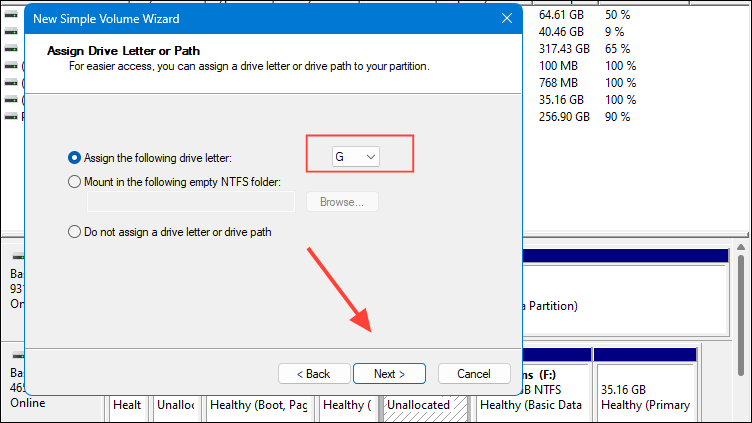
- Next, select the file system and volume label. Make sure to keep the 'Perform a quick format' option checked. Finally, click on the 'Finish' button to complete the process.

Fix 5: Check your device drivers
There may be a problem with the device drivers of the external drive that is preventing it from showing up. You can use the Device Manager to check this.
- Right-click on the Start button and click on 'Device Manager'.
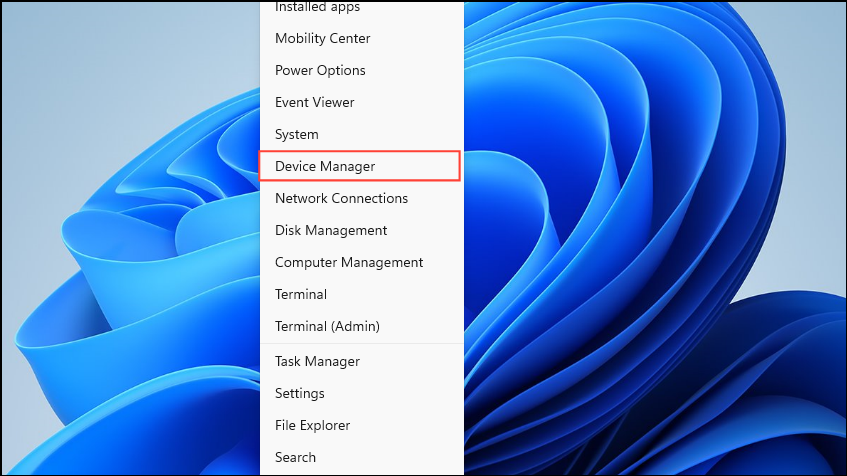
- When the Device Manager opens up, click on the 'Disk drivers' section to expand it. Check whether there is a yellow exclamation mark. If there is, that means there is a problem with the driver.
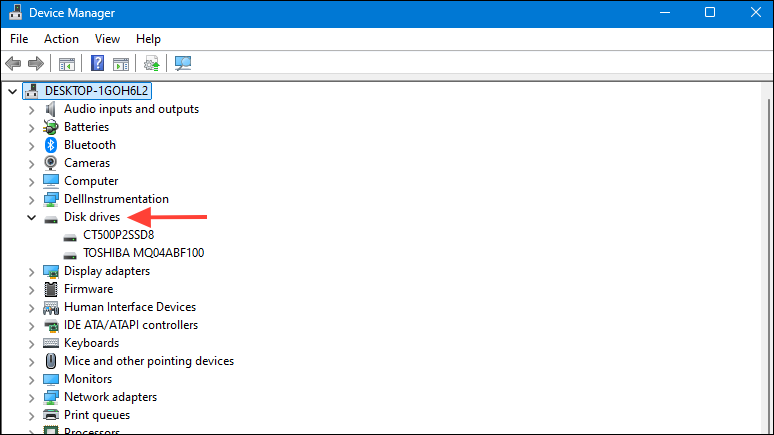
- You can right-click on the driver and then click on 'Properties'. If there is a problem, you will see an error message here.

- If the driver for the device is outdated, right-click on it and click on 'Update driver'.
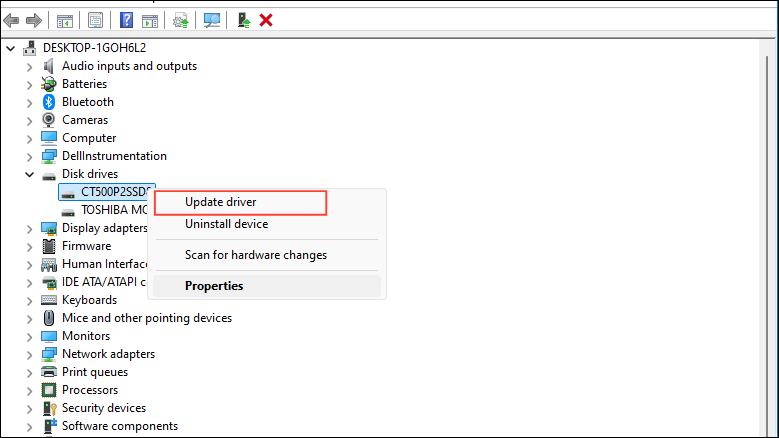
- Then click on 'Search automatically for drivers' and let Windows look for the latest drivers online.
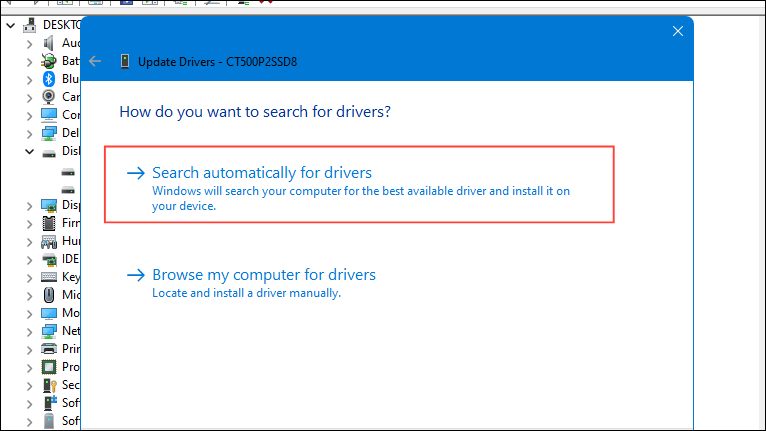
- If Windows finds any new drivers, it will install them and you can restart your PC and then check whether your external drive is showing up now. Alternatively, consider visiting the website of the manufacturer of your computer and checking for the latest device drivers there.
- If updating the driver does not work, try rolling back or uninstalling the driver. You can do so from the Properties panel by clicking on the 'Driver' tab at the top and then on the 'Roll back driver' or 'Uninstall device' button.
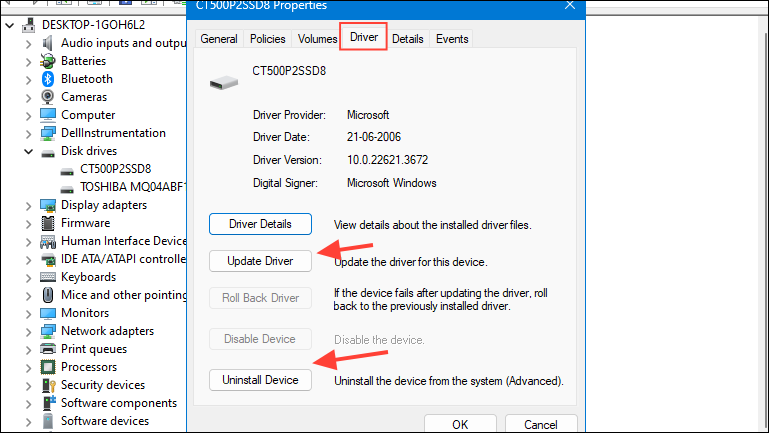
Fix 6: Format the external drive
You may not be able to access your external drive if it is formatted wrong, such as ext4 or other formats that Windows cannot read. To fix this,
- Right-click on the drive and click on 'Format'.
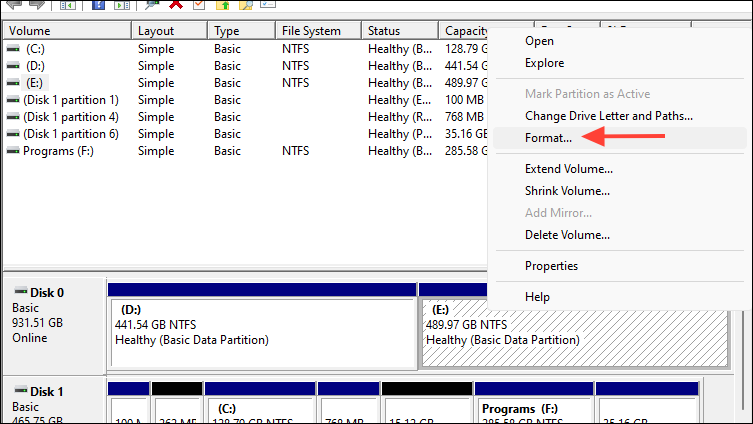
- Make sure to select 'Allocation unit size' as Default and then select the 'FAT32' option when formatting. If you only want to use the drive with Windows computers, you can also use the NTFS option, otherwise use exFAT.
- Wait until the drive is formatted and then try disconnecting and reconnecting it.
Things to know
- You should also check that your external drive is working properly and turns on when it is connected to a computer. Some drives have a switch or dedicated power cables that you need to connect and turn on to power the device.
- Try connecting the drive to a different port of your computer, or if possible, a different machine. Doing so will help you check whether your drive is working properly or not.
- If your drive is protected with a password, you may need to disable password protection before it is visible on your computer.
- In case your external drive does not appear even after trying out various solutions, the problem may be related to its hardware.


